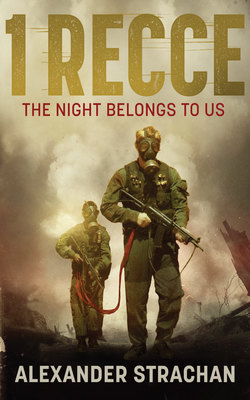Читать книгу 1 Recce - Alexander Strachan - Страница 6
На сайте Литреса книга снята с продажи.
1
ОглавлениеFirst action
The thinking behind the formation of 1 RC can be traced back to the 1960s. It was in these early days of the Bush War that the first South African attack in Ovamboland was carried out on Swapo’s Ongulumbashe base on 26 August 1966.
At that stage only the South African Police (SAP) were used to combat Swapo insurgents in South West Africa (SWA). Therefore Capt. Jan Breytenbach’s team of eight paratroopers first had to be sworn in as ‘special police’ so that they could attack the base from helicopters alongside the police force. Apart from Breytenbach himself, his team consisted of Kaas van der Waals, Wouter Hugo, W Burgess, Yogi Potgieter, J Snyman, Tilly Smit and Johnny Kruger.
The SAP’s Maj. ‘Rooi Rus’ (Red Russian) Swanepoel was in command of the combined attack that was known as Operation Blouwildebees.2 The command structure was on the ground instead of in a helicopter to orchestrate the attack from the air. Hence the operation had limited success – two Swapo fighters were killed and nine captured, while a considerable number escaped.
During the debriefing in Pretoria it was realised that the SAP were no longer able to keep the Swapo insurgents in SWA in check on their own. This led to the entry of the SADF into the Border War.
Breytenbach was in the British Royal Navy before he returned to South Africa. Cmdt. WP Louw persuaded him to join 1 Parachute Battalion. This was before Operation Blouwildebees, and by then Breytenbach had already had extensive military exposure.
In the Royal Navy he had specialised in night navigation and was the top achiever in his group. He was a navigator in the elite Night Fighter Squadron of the Fleet Air Arm.
Apart from navigation, he learnt much about flying and maritime topics. A highlight of his navy career was his service period in the Far East. The different ports they called at and the variety of positions in which he was employed had broadened his vision within a short space of time. Breytenbach was a keen reader, and from early on in his life he had developed personal ideas and views about how a defence force should function.
He also completed an extensive infantry course in the United States. This was where his interest in the methods and activities of the British Special Air Service (SAS) and the US Marine Corps took root. At 1 Parachute Battalion he wrote a letter to Cmdt. Louw that provided the spark for the founding of a unit similar to the SAS in South Africa. Subsequently he and Louw had regular discussions about unconventional warfare.
Louw, who had been promoted in the meantime, had a meeting in Pretoria with Breytenbach and Maj. Dudley Coventry, commander of C Squadron SAS Rhodesia. Thereafter they were intent on setting up a unit similar to the SAS. When Louw became Chief of the Army the following year (on 1 December 1967), he immediately arranged for a hand-picked team of men to be sent to Rhodesia (now Zimbabwe) for training by C Squadron SAS.
Jan Breytenbach was part of the group, and the other members included men such as Eddie Webb, Boytjie Viviers and Barrie Ferreira. Others were Frank Bestbier, Yogi Potgieter, Johnny Kruger, Pep van Zyl and Tillie Smit. This team could possibly form the nucleus of Lt. Gen. Louw’s envisaged unit.
It was a gruelling selection course in which the Rhodesian instructors showed the South Africans no mercy. The group was exposed to advanced demolition, signals and parachuting (for those who were qualified jumpers). This was followed by battle drills at small-team level, rock climbing, abseiling and speed marches with heavy packs.
In southern Matabeleland the course participants had to undergo an escape-and-evasion exercise. They were locked up for days in a tiny cell with hardly any food and subjected to interrogation. Eventually they were carted off in a cattle truck, but they managed to break out and fled. Breytenbach was captured during this phase and subjected to a series of interrogation techniques that included having a bag pulled over his head, being kept awake continually and having cold water poured over him at night.
Those who had endured the tests successfully were taken to the Zambezi Valley where they did a survival and tracking course at the Chewore River. Next they went to Lake Kariba for the final phase of their training. Only a handful of candidates passed the selection course, including Breytenbach, Yogi Potgieter and Pep van Zyl.
The successful candidates received their SAS berets and belts during a function held at the SAS headquarters in Salisbury (now Harare), following which they returned to South Africa. Nobody knew what the next step would be, but by this time Breytenbach was like a coiled spring. He was determined to present the same selection course on home soil as soon as South Africa’s own SAS-type unit was formally approved.
The genesis and establishment of a specialist unconventional fighting unit in the SADF would turn out to be an integrated process in which more than one factor played a role. The end result would be the birth of a unit that differed completely from any existing unit in the SADF.
But a lot still had to happen before this ideal could be realised. The breakaway state of Biafra (part of Nigeria) was at that stage an unfamiliar name to many South Africans. And it was there that a conflict was brewing that was to have a decisive influence on the founding of an SAS-type unit in South Africa.
